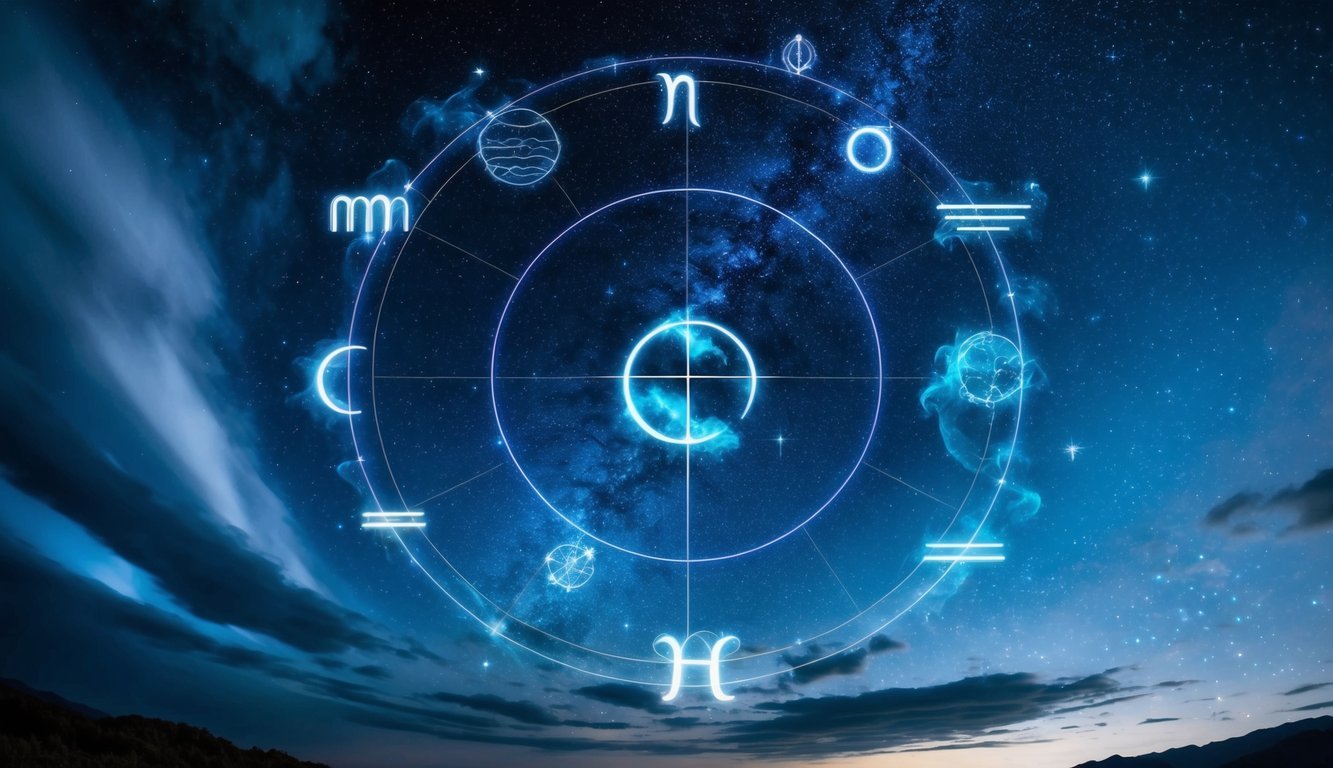Physical Address
304 North Cardinal St.
Dorchester Center, MA 02124
Physical Address
304 North Cardinal St.
Dorchester Center, MA 02124
Astrology combines traditional roots with contemporary insights, emphasizing personal growth through psychological understanding and the influence of planetary positions on individual experiences and relationships.

Modern astrology draws from its traditional roots while incorporating new ideas and insights.
It emphasizes a personal connection to the cosmos, offering valuable guidance to those who seek it.
Understanding this evolution helps clarify the significance of planetary influence and the meanings behind zodiac signs.
Traditional astrology focused mainly on the positions of celestial bodies and their meanings.
It was often linked to fate and destiny.
As society evolved, so did astrology.
Modern astrology integrates psychology, emphasizing personal growth and self-awareness.
This shift allowed for new interpretations, making astrology more relevant to contemporary life.
In modern astrology, each planet symbolizes different aspects of life.
For example:
Understanding these associations helps individuals connect with their personal experiences.
The planets influence emotions, decisions, and personality traits based on their positions in a natal chart.
This allows readers to gain insights into their strengths and challenges.
Zodiac signs are crucial in astrology, providing essential insights into personality.
Here are a few key signs:
These signs help people better understand themselves and their relationships.
Each sign’s traits can guide individuals in their life choices and interactions with others.

Astrological houses and aspects are key elements in understanding a birth chart.
The twelve houses represent different areas of life, while aspects show how planets interact with each other.
Together, they provide insights into personality and life experiences.
The twelve houses in astrology each relate to specific themes and areas of existence.
For example:
Each house is influenced by the sign on its cusp and any planets residing within it.
Depending on the planets in these houses, individuals may experience different challenges and opportunities in these areas of their lives.
Aspects describe the angles between planets in a birth chart, indicating how they relate and interact.
Trine: This aspect occurs when planets are about 120 degrees apart. It is typically positive, suggesting harmony and ease in energy flow. For instance, a trine between the Sun and Moon can indicate a strong inner balance.
Square: Found when planets are 90 degrees apart, squares represent challenges and tension. They push individuals to grow, even if it feels uncomfortable. For example, a square between Mars and Saturn can present obstacles in taking action.
Opposition: Oppositions happen when planets are directly across from each other, about 180 degrees apart. This aspect often highlights conflicts and dualities that need resolution. A strong opposition may indicate areas in life where balance is crucial.
Understanding these aspects helps gain clarity on dynamic interactions within a chart.

Natal astrology focuses on the natal chart, which is a snapshot of the sky at the moment of a person’s birth.
This chart provides insights into personality traits, life events, and overall life path.
The natal chart uses the positions of planets and signs to establish an individual’s astrological identity.
The natal chart, also known as a birth chart, consists of twelve houses and signs.
Each house represents different aspects of life, such as relationships, career, and personal growth.
Key components of a natal chart include:
Astrologers analyze these elements along with the angles between planets, known as aspects.
This analysis helps reveal strengths, challenges, and potential life paths for individuals, making it a valuable tool for self-discovery.
Each zodiac sign has a planetary ruler that influences characteristics and behavior.
For instance, Aries is ruled by Mars, which embodies energy and assertiveness, while Taurus is ruled by Venus, symbolizing love and beauty.
Understanding planetary rulers helps individuals connect with their traits and energies.
The placement of these planetary rulers in a natal chart influences how their energies manifest.
For example, if someone has their Venus in Leo, they may express love and creativity dramatically.
By studying these rulers, individuals can gain deeper insights into their motivations, challenges, and strengths.
This knowledge can be instrumental in making informed life choices.

Astrology provides insights into both psychological and spiritual aspects of life.
These dimensions can help individuals understand themselves and promote personal growth.
Psychological astrology focuses on how astrological elements influence personality traits.
It examines how the signs and planets shape emotional responses and behavior patterns.
For example, the outer planets like Uranus, Neptune, and Pluto represent deep psychological themes.
They often highlight areas in a person’s life requiring transformation or healing.
Astrologers use natal charts to analyze significant placements and aspects.
This supports a person’s journey in discovering their true self.
By understanding their astrological influences, individuals can achieve greater self-awareness and make empowered choices.
This approach connects with concepts in psychotherapy and metaphysics.
It encourages personal evolution, showcasing how one can integrate free will with cosmic influences.
Spiritual astrology emphasizes growth and enlightenment.
It guides individuals toward understanding their life purpose and spiritual path.
This branch often draws from evolutionary astrology, which reflects on past life experiences and how they affect the present.
Practitioners believe that understanding one’s spiritual lessons can lead to profound personal transformation.
By studying their charts, individuals can uncover karmic patterns and tendencies.
Spiritual astrology fosters a deeper connection to the universe.
It helps individuals align with their higher selves and cultivate a sense of fulfillment.
Through this lens, astrology serves as a tool for self-discovery, revealing one’s spiritual gifts and challenges.

Astrology has become a significant part of modern culture, influencing various aspects of life.
Its impact can be seen through media channels like podcasts and print publications, along with its presence in art, literature, and lifestyle choices.
Numerous podcasts explore astrology, making the subject accessible to a wider audience.
Shows like “Astrology Podcast” offer insights from experts and enthusiastic amateurs alike.
They break down complex topics into easy-to-understand discussions.
In addition to podcasts, there are many publications focused on astrology.
Magazines and online platforms provide horoscopes and articles about zodiac signs.
Some even discuss how astrology intersects with issues of class and race, making it relatable for diverse audiences.
Astrology also shapes art and literature in meaningful ways.
Many poets incorporate astrological themes into their works, using symbols to express emotions and ideas.
For example, Brooklyn-based artists often blend magic with astrology, creating visually stunning pieces that resonate with audiences.
In lifestyle, people frequently use astrology for personal insights.
They consult charts to make decisions or to understand their relationships better.
As astrology integrates with modern life, it has become a tool for self-discovery and personal growth.

Astrology faces ongoing debates regarding its legitimacy as a science or form of divination.
Critics often express skepticism, focusing on its foundations and practices.
Understanding these perspectives helps clarify the complex relationship between astrology and its detractors.
Many view astrology as a form of divination more than a science.
It relies on celestial bodies’ positions to interpret human behavior and predict future events.
Critics argue that astrology lacks empirical evidence and reproducibility, essential characteristics of scientific disciplines.
Those in support of astrology claim that it offers insights into personal growth and understanding.
They see it as a tool that helps people navigate life’s uncertainties.
This dichotomy fuels passionate debates about whether astrology can coexist with scientific inquiry.
Astrology attracts skepticism mainly due to its reliance on interpretation rather than hard data.
Critics argue that its predictions are too vague and rely on confirmation bias.
This means people remember accurate predictions but forget the inaccurate ones.
Many skeptics believe that astrology can lead to harmful consequences.
For instance, individuals may make significant life decisions based on astrological guidance rather than logic or evidence.
The ongoing questioning of astrology highlights a broader concern about how people handle uncertainty in their lives.

Many people have questions about modern astrology and how it differs from traditional practices.
This section will explore various aspects of modern astrology, including the differences in interpretations, the relevance to younger audiences, accuracy, evolution, content in magazines, and resources for learning.
Modern astrology often takes a psychological approach, focusing on personal growth and self-awareness.
It may emphasize individual experiences and emotions more than traditional astrology, which tends to follow set rules based on planetary positions.
This shift allows for more personalized readings, catering to unique life situations.
Modern astrologers use accessible language and digital platforms to reach younger audiences.
They often incorporate social media, apps, and online communities to engage with clients.
Additionally, they relate astrology to popular culture and everyday experiences, making it more relevant to the lives of younger individuals.
The accuracy of modern readings can depend on several factors, including the astrologer’s experience and intuition.
Using precise birth data enhances the chart’s reliability.
Furthermore, modern astrologers may also consider current events and cultural trends that could impact personal astrology, providing a more well-rounded view.
Modern astrology has expanded beyond the traditional focus on birth charts and horoscopes.
New techniques and approaches, such as integrating psychological insights and exploring collective trends, have emerged.
This evolution allows for a broader interpretation and application of astrological principles in today’s fast-paced world.
Modern astrology magazines often feature articles on zodiac signs, compatibility, and personal growth techniques.
Readers can find horoscopes, interviews with astrologers, and advice on how to use astrology in daily life.
Additionally, content may include artwork, community stories, and trending topics in astrological practice.
Books by reputable astrologers can provide a solid foundation for beginners.
Online courses and webinars also offer structured learning experiences.
Reading blogs and following social media accounts dedicated to astrology can keep one updated on current practices and trends, fostering a deeper understanding.